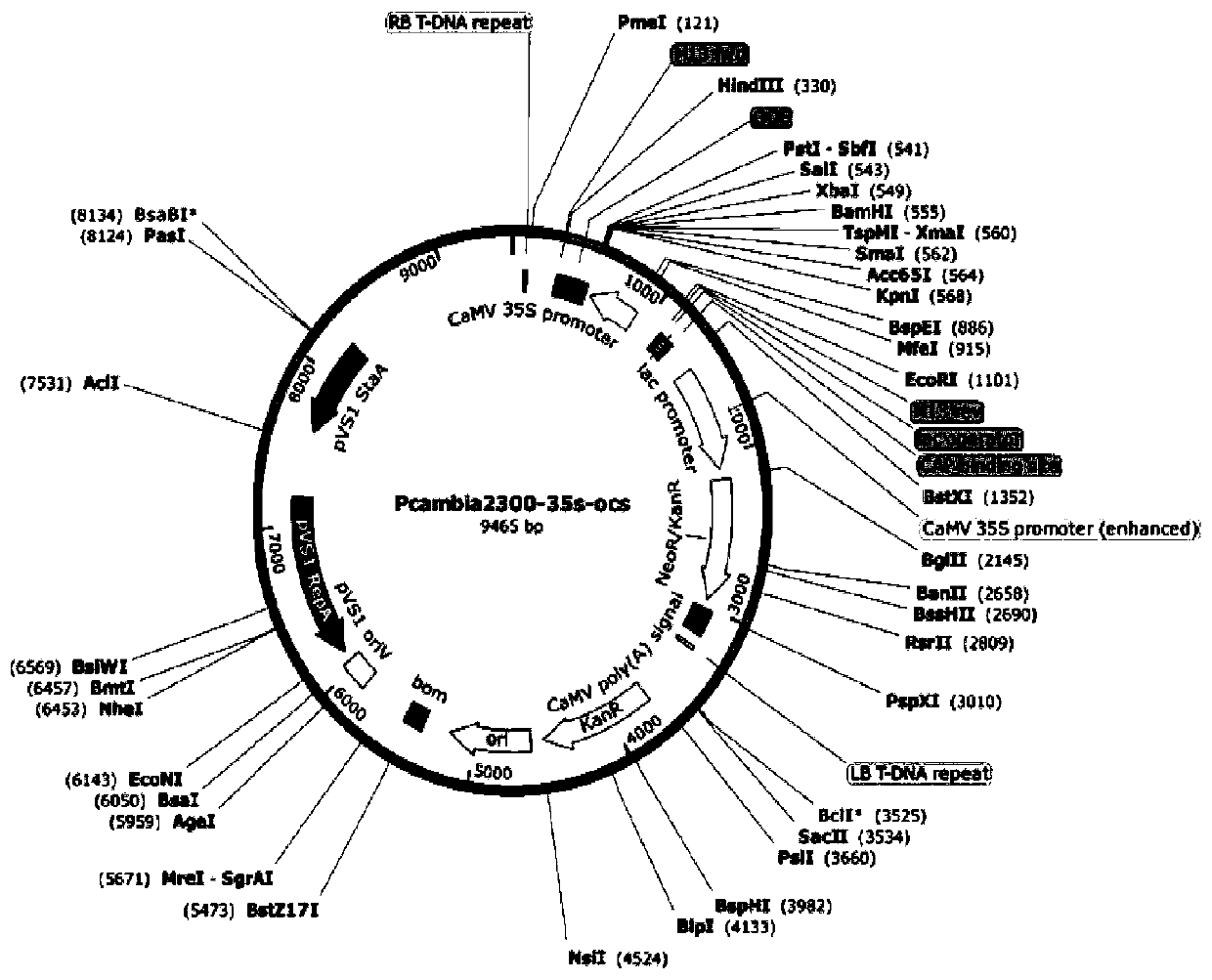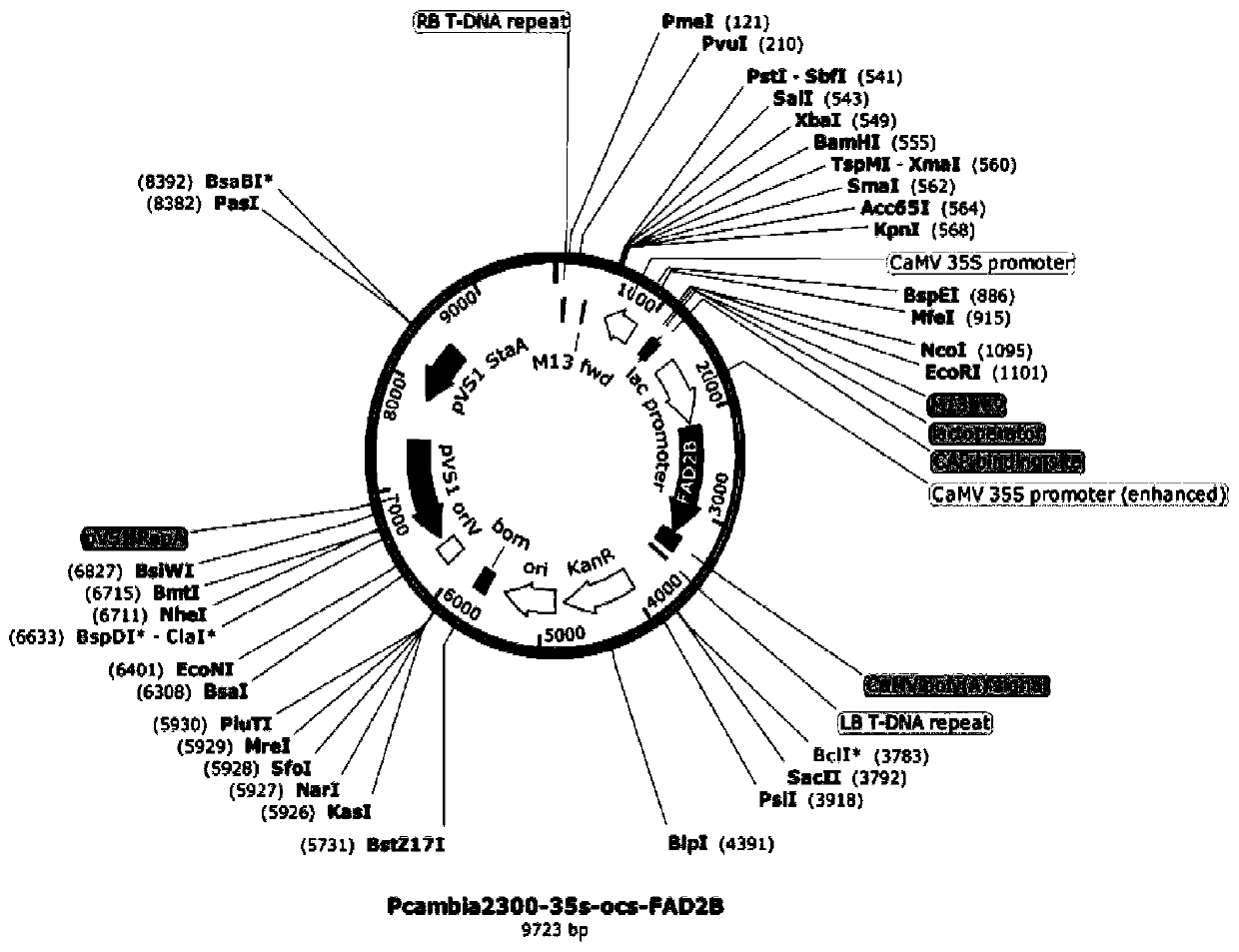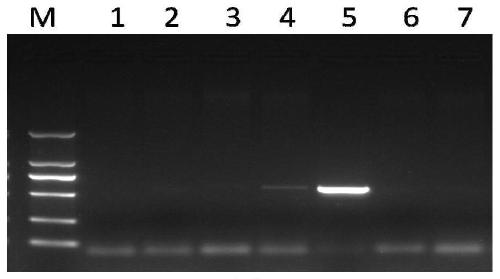A method for screening transgenic peanuts by constructing an expression vector containing Δ12-fatty acid dehydrogenase gene
A technology of fatty acid dehydrogenase and expression vector, applied in the field of genetic engineering, can solve problems such as environmental and human health adverse effects and damages, and achieve high conversion efficiency and simple operation
- Summary
- Abstract
- Description
- Claims
- Application Information
AI Technical Summary
Problems solved by technology
Method used
Image
Examples
Embodiment 1
[0037] Example 1 Construction of a plant expression vector containing Δ12-fatty acid dehydrogenase gene
[0038] (1) Design primers according to the AhFAD2B gene sequence (SEQ ID NO.1), and perform PCR amplification using the genomic DNA of Fenghua No. 1 peanut variety as a template, wherein the primer sequences are as follows:
[0039] Upstream primer FAD2B-F: 5'-ATGGGAGCTGGAGGGCGTGT-3' (SEQ ID NO.2),
[0040] Downstream primer FAD2B-R: 5'-TCAGAACTTGTTCTTGTACCAATAA-3' (SEQ ID NO.3);
[0041] The reaction system for PCR amplification is: I-5Mix 25 μl, upstream primer FAD2B-F and downstream primer FAD2B-R 1 μl each, DNA template 1 μl, H 2 O 22 μl; PCR reaction program: pre-denaturation at 98°C for 2 min; denaturation at 98°C for 20 s, annealing at 59°C for 20 s, extension at 72°C for 20 s, 30 cycles; extension at 72°C for 2 min.
[0042] (2) connecting the AhFAD2B gene amplified in step (1) to the pMD18-T vector to obtain the AhFAD2B-pMD18-T recombinant plasmid;
[0043] Amo...
Embodiment 2
[0053] Example 2 Construction of the plant expression vector containing the Δ12-fatty acid dehydrogenase gene of the target gene AhPIF3
[0054] (1) Chinese patent document CN107056905A discloses peanut phytochrome interaction factor AhPIF3 and its coding gene. In this example, the genomic DNA of peanut variety Luhua No. 14 was used as a template for PCR amplification to obtain the peanut phytochrome interaction factor coding gene AhPIF3 , the nucleotide sequence of the AhPIF3 gene is shown in SEQ ID NO.6, wherein the primer sequences are as follows:
[0055] AhPIF3-F: 5'-CCC GGTACC ATGCCTTTTTATGAGTTATACCG-3' (SEQ ID NO.7, the underline is the KpnⅠ restriction site),
[0056] AhPIF3-R: 5'-CCC TCTAGA TCAATCATCATAACCAGTCACA-3' (SEQ ID NO.8, the underline is the XbaI restriction site);
[0057] The reaction system for PCR amplification is: I-5Mix 25 μl, upstream primer AhPIF3-F and downstream primer AhPIF3-R 1 μl each, template cDNA 1 μl, H 2 O 22 μl; PCR reaction program: ...
Embodiment 3
[0061] Embodiment 3 Transformation of the plant expression vector containing the Δ12-fatty acid dehydrogenase gene of the target gene AhPIF3
[0062] The recombinant agrobacterium prepared in implementing 2 is transformed into peanut, comprising the following steps:
[0063] (1) Select the plump high-oleic peanut variety K17-15 mature seeds for single sowing, with a plant spacing of 20 cm, and select 20 holes with better growth as recipient plants;
[0064] (2) When the flowering period is approaching, observe every morning, manually remove the flowers to prevent the needles from setting fruit, and the work of removing flowers continues until the blooming period comes;
[0065] (3) After reaching the full flowering stage, inject Agrobacterium from 6:00 am to 8:00 am every day. The specific method: inhale an appropriate amount of Agrobacterium suspension with a 1ml disposable syringe, select the flower buds that open that day, and insert the syringe into the upper part of the c...
PUM
 Login to View More
Login to View More Abstract
Description
Claims
Application Information
 Login to View More
Login to View More - R&D
- Intellectual Property
- Life Sciences
- Materials
- Tech Scout
- Unparalleled Data Quality
- Higher Quality Content
- 60% Fewer Hallucinations
Browse by: Latest US Patents, China's latest patents, Technical Efficacy Thesaurus, Application Domain, Technology Topic, Popular Technical Reports.
© 2025 PatSnap. All rights reserved.Legal|Privacy policy|Modern Slavery Act Transparency Statement|Sitemap|About US| Contact US: help@patsnap.com



